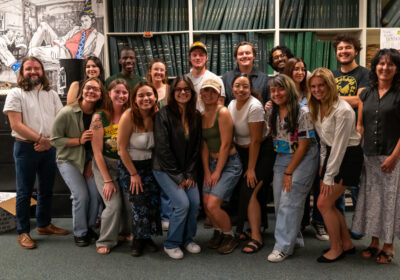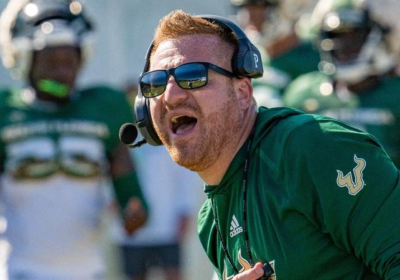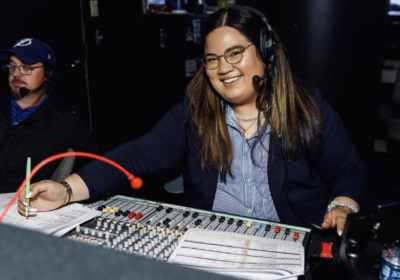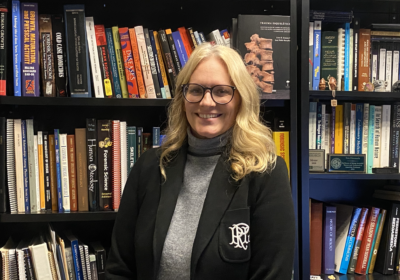The voice of NASA
Most USF mass communications graduates go on to work for news stations, advertising firms or print publications. The flight path for George Diller’s career took a different trajectory.
Diller, who graduated from USF in 1972 with a degree in broadcast journalism and again in 1977 with a degree in business administration, has worked for NASA for 32 years. He was there for the first shuttle launch in 1981 and even broadcast the countdown for the final shuttle launch in July.
During his time at USF, Diller worked for WUSF, announced Bulls baseball games and covered the Kennedy Space Center for a local Clearwater station. The Oracle caught up with Diller to talk about his job, the future of NASA and the possibility of extraterrestrial life.
The Oracle: The shuttle program has ended, but NASA has still had a busy year. What’s coming up this month?
George Diller: The day after Thanksgiving, we have a launch to Mars. There is a Mars rover that’s as big as a golf cart. In other words, it’s bigger than the two smaller rovers that have been running around up there, Spirit and Opportunity. This is a really large rover that will have a lot of capability that we’ve never had on Mars before.
We’re taking advantage of having something this large to put numerous different scientific experiments on, as well as cameras, and do a number of things that will help us build on what we’ve learned. Spirit and Opportunity raised as many questions as they answered, which is sort of what we expected.
O: What is the focus of the mission?
GD: We’re still trying to follow the water. We know there was water on Mars. We’re still trying to see if the building blocks for life are there or were there.
Now we’re trying to look in the areas where we know water was, and be able to drill into some of these rocks so that we can look into some of the layers that might show us where some of the chemical ingredients were for life.
We think the building blocks are there, but we’ve always gotten conflicting signals. The more we narrow down where the most likely sites are that life might have started or might exist on some very low level, we want to try and find those sites to give us a clue into how Mars has evolved and how it will continue to evolve and (if) the catalyst for life (is) there.
O: What exactly does your job with NASA entail?
GD: I’m a NASA public affairs officer. Dealing with the news media is my primary interface between the agency and the outside world. We’re supposed to be sort of a conduit of the information of what NASA is doing here at the Kennedy Space Center.
The way that most people recognize my job is that I’ve done a lot of the launch commentaries on NASA television during the countdown for launch, and I’ll be doing the countdown for the Mars launch on Nov. 25. I did quite a number of the space shuttle launches ,as well. In fact, I did the very last shuttle launch with Atlantis this summer.
It gives me a chance to become somewhat embedded with the engineers here that are developing some of the things we launch – not just the rockets, but also some of the spacecraft, like the Mars Science Laboratory. That’s kind of been one of the highlights of the job over the (32) years that I’ve been here, is to have had some direct involvement in a lot of scientific payloads that we’ve launched. That would include the Hubble Space Telescope, Galileo to Jupiter, Magellan to Venus and some of the past Mars flights.
O: Which one was your favorite?
GD: The International Space Station was fun because now I can look up there and actually see that at night when it goes overhead. You know, knowing everything we did down here on the ground to launch all these individual elements for the space station on the space shuttle.
It’s fun to know that what goes overhead is as big as a football field. And for the next 10 years, there’s going to be a lot of very important, groundbreaking science done on the space station.
O: How has NASA’s goals shifted with the end of the shuttle missions?
GD: What NASA will begin doing is focusing on getting beyond lower Earth orbit, beyond the space station. We’ve started work on what we call a ‘space launch system,’ which is a heavy vehicle that can go far beyond the space station and go into other locations in the solar system. Meanwhile, everything in the lower Earth orbit where the space station is, that will gradually be commercialized over the next several years.
O: Will privatized space travel change your job as well?
GD: Our role in that is different. We are involved in setting the government requirements and doing the oversight and writing the contracts that will go to these commercial launch service companies to launch astronauts or cargo. Actually, almost all of the Kennedy Space Center is transitioning into something more like a commercial space industrial park. NASA will still be here working on the heavy lift vehicle parallel with what the commercial guys are doing for lower Earth orbit.
Kennedy Space Center has been pretty much a NASA entity. Now, it’s going to gradually evolve more into a quasi-commercial facility where we are working together with the private sector to get things to the space station, as well as NASA working on its own to develop a big rocket.
Eventually, we want to go and put an astronaut on an asteroid, maybe on Mars, maybe on a moon of Mars. We could put astronauts on a libration point between where Earth’s gravity and the moon’s gravity or the sun’s gravity are about the same. So you can station something permanently way out in space to conduct research.
O: Having been a NASA insider for more than 30 years, do you believe in aliens?
GD: I think that when you realize how big the universe is and how many stars have planets and how many of those planets apparently might have that possibility and how many galaxies there are, it almost seems like there has to be something somewhere. We just don’t know where.
We’ve been getting signs that we might not be totally unique in our own solar system here by the sun. Do I think there’s any kind of intelligent life out there? Well, if there is, they are having as much trouble communicating with us as we are with them because the distances are just so vast.







